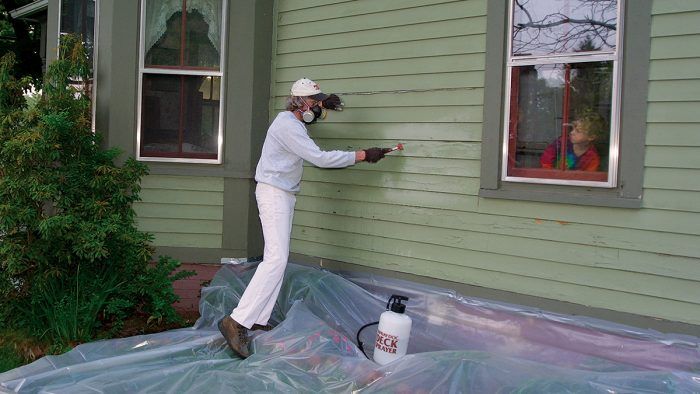Lead-Paint Safety, at Home and on the Job
Whether you're remodeling an older home or just living in one, knowing how to minimize exposure to lead will help you to keep you and your family healthy.

Synopsis: A practical discussion of how to handle lead paint around the home and at the job site. The author describes testing and maintenance procedures, removal techniques, and specialized equipment and resources for dealing with lead safely. Includes a sidebar on exterior lead paint.
Learn more about lead paint safety and laws that govern it.
“A paint chip the size of your fingernail can contain enough lead to poison a child.”
I heard those words two years ago at a lead-paint seminar in Boston, and even though I’ve always known that undisturbed lead paint does not pose a threat to children they freaked me out so much I went home and had my 2-year-old son’s blood tested for lead. Fortunately, he was fine, but I haven’t looked at the paint in our Victorian the same way since.
From the early 19th century through the 1940s, almost all the premium house paints sold in this country were heavily leaded so much so that the lead content of some cured paints is as much as 65%. Although the product was not banned by the federal government until 1978, many paint manufacturers began to phase out their use of lead as early as 1950. What this means is that a house built prior to 1978 may or may not have lead-based paint, while a house that was built before 1950 probably is loaded with the stuff.
It’s not the chips – it’s the dust that makes children sick

The statement that a tiny chip of lead paint can poison a child is technically correct, but misleading. If a child were to swallow that chip, most of it would pass through his or her system without being absorbed. If that chip were ground up into dust, however, say, by a belt sander, and then swallowed, that child could be in serious trouble. “Dust is the principal pathway for the ingestion of lead,” says Roy Petre of the Massachusetts Department of Public Health. “The finer the particle, the more readily it’s ingested and absorbed across the gastrointestinal wall.”
Lead poisoning can affect all ages, but young children are most at risk. According to Eileen Quinn, deputy director of the Alliance to End Childhood Lead Poisoning, “Lead is an extremely dangerous neurological toxin that is most harmful to children under the age of 6 because it interferes with their intellectual development at a time when their brains are developing at warp speed. Anything that interferes with that process affects them for the rest of their lives.” The most likely victims of lead poisoning are infants and toddlers simply because they crawl around on the floor and put everything they touch in their mouths.
Having fully developed brains and higher standards of personal hygiene, adults are less susceptible, but not immune, to the harmful effects of lead. The human body is able to flush traces of lead out of the system, but unprotected exposures to airborne lead dust or worse, the fumes released when a torch is used to remove lead paint can result in dangerous levels of lead being absorbed into the bloodstream. High lead levels in adults can lead to health problems as diverse as high blood pressure, fatigue, anemia, headaches, mood changes, memory lapses, digestive disorders, kidney damage and reproductive problems.
For more photos and details on lead paint safety, click the View PDF button below.






View Comments
Lead damages many organs, and the damage to the developing brain can be lifelong. The pandemic ruined many plans. One of them is lead removal. But still, there are some changes in this regard – a new law has been passed for builders and repairmen in New York, the EPA requires the RRP Lead Renovator Initial Course https://www.ablesafety.com/course/8-hour-epa-rrp-lead-safe-certified-renovator-initial-blended is mandatory and must be passed by the end of the year. It contains a hands-on training component, therefore the majority of the class may be done online (6 Hours) but participants will still be required to attend a small portion to participate in the hands-on activities (2 Hours)
This informative article sheds light on the potential dangers of lead paint in older homes and its impact on human health, especially on young children. The distinction between the harm caused by lead paint chips and lead dust is crucial, emphasizing the need for caution during renovation or restoration projects. The article serves as an important reminder for homeowners to be vigilant about lead paint hazards and take necessary precautions to safeguard their families' health. For construction workers should get https://www.oshaoutreachcourses.com/blog/osha-360-training/ to work safely.